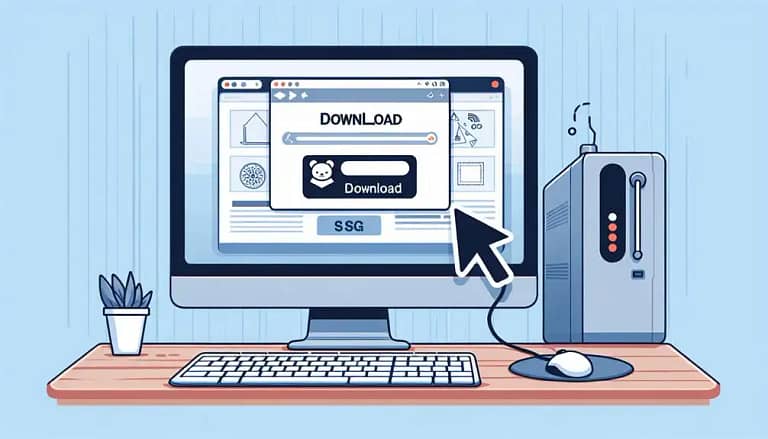Selling Etsy Copyrighted SVG files

So, you’re curious about how individuals manage to sell copyrighted SVG files on Etsy without facing repercussions? Well, it’s a complex web of tactics that shield them from consequences. From exploiting loopholes in platform enforcement to concealing their identities through pseudonyms, sellers navigate a murky terrain where infringement can be disguised and accountability is elusive. The strategies employed reveal a cat-and-mouse game that challenges traditional notions of copyright protection in the digital age. Intrigued to unravel more about this intricate dance between sellers and copyright boundaries?
Lack of Enforcement by Platforms
Due to the sheer volume of listings on platforms like Etsy, copyrighted content may slip through without active monitoring for infringement. This lack of accountability creates opportunities for sellers to engage in copyright evasion tactics. Platforms like Etsy, at times, exhibit ineffective monitoring, which enables sellers to exploit the system.
Seller anonymity further complicates the situation, as individuals can operate under pseudonyms, making it challenging for platforms to track and enforce copyright policies effectively. The platform negligence in actively addressing instances of copyrighted material being sold allows sellers to continue their practices without immediate repercussions. This loophole in enforcement mechanisms contributes to the persistence of copyright infringement on platforms like Etsy.
As a seller, it’s crucial to recognize the importance of respecting intellectual property rights and refrain from engaging in activities that involve selling copyrighted material to uphold ethical standards within the online marketplace.
Use of Pseudonyms When Selling Copyrighted SVG files
When selling copyrighted SVG files on platforms like Etsy, utilizing pseudonyms can serve as a deceptive tactic to evade detection and accountability for intellectual property infringement. Seller anonymity through the use of pseudonyms presents a challenge for copyright holders trying to track down individuals engaging in copyright evasion.
By concealing their true identities behind fake names or aliases, sellers make it harder for legal actions to be taken against them. The detection challenges posed by these concealed identities can prolong the process of identifying and holding infringers accountable. Despite the hurdles, platforms like Etsy are continuously working to enhance their monitoring mechanisms to mitigate such practices.
However, sellers employing pseudonyms strategically to avoid legal repercussions must be cautious, as the consequences for selling unauthorized SVG files can be severe once their true identities are revealed. It’s essential for platforms and copyright holders to collaborate in addressing this issue effectively.
Alteration of Original Designs
To navigate the challenges of selling copyrighted SVG files on platforms like Etsy, sellers may resort to altering original designs, such as changing colors or adding elements, in an attempt to mask the copyrighted nature of the works. Design manipulation plays a crucial role in this process, as tweaking elements of the original design can create a semblance of a new and unique piece. While sellers may view this as a way to avoid copyright implications, it’s essential to consider the ethical considerations and copyright implications of such actions.
Creative transformation through altering designs slightly might seem like a way to evade detection by automated systems, but it also raises questions about seller responsibility. Sellers must understand that even small modifications may not absolve them from copyright infringement if the original elements are still recognizable. Therefore, sellers should exercise caution and seek legal advice to ensure they aren’t infringing on intellectual property rights, as altering designs may not always provide the legal protection they hope for.
Limited Detection Resources for Copyrighted SVG files
Etsy’s capacity to detect every copyrighted SVG file listed for sale on the platform is limited. This limitation opens up opportunities for sellers to engage in copyright evasion through various tactics. Here are some key points to consider:

- Seller tactics: Some sellers may employ strategies to hide the true origin of the designs or make slight modifications to claim them as their own.
- Copyright evasion: Operating under different usernames or altering designs are common methods used to avoid detection and continue selling copyrighted material.
- Detection challenges: With the vast number of listings on Etsy, it becomes challenging for the platform to identify every instance of copyrighted content being sold.
- Marketplace loopholes: Etsy’s monitoring systems heavily rely on reports from users or copyright holders, leaving room for sellers to exploit gaps in the detection process.
- Risk assessment: Sellers who exploit these limitations conduct a risk assessment, balancing the potential legal consequences against the benefits of selling copyrighted SVG files without immediate repercussions.
Exploiting Legal Gray Areas
Some sellers exploit legal gray areas by making subtle modifications to copyrighted designs to sell them as original creations on the platform. By applying transformative changes such as altering colors, adding minor elements, or adjusting sizes, sellers attempt to navigate copyright loopholes and manipulate designs to their advantage.

This creative interpretation of copyrighted works capitalizes on legal ambiguities, allowing sellers to argue that their modified designs are distinct enough to evade infringement claims. Sellers walk a fine line, pushing the boundaries of copyright law by relying on subjective assessments of what constitutes a significant transformation.
This design manipulation strategy thrives on Etsy’s limited oversight and enforcement mechanisms, enabling sellers to operate in a space where the line between original creation and infringement blurs. Exploiting these legal gray areas presents a challenging dilemma for platforms like Etsy, as they strive to balance the protection of intellectual property rights while accommodating the creative expression of their sellers.
Difficulty in Proving Infringement
Proving infringement of copyrighted SVG files on Etsy poses significant challenges due to the digital nature of the files and the lack of visible watermarks or metadata that can establish ownership. When dealing with digital file complexities, it becomes a daunting task to prove ownership and authorship, leading to potential ownership disputes.
In the realm of litigation, the absence of clear proof of authorship can hinder copyright holders from effectively enforcing their rights. Online piracy detection further complicates matters, making it harder to track down and hold infringers accountable.
The intricate web of challenges in proving infringement not only frustrates copyright holders but also creates a loophole for sellers to exploit, perpetuating the cycle of unauthorized use of copyrighted materials online.
Final thoughts on Selling Copyrighted SVG files
You’ve learned about the various ways people exploit loopholes to sell copyrighted SVG files on Etsy. From using pseudonyms to altering designs and taking advantage of limited detection resources, sellers are able to evade consequences for their actions.
The challenges in enforcing copyright policies online highlight the complexities of protecting intellectual property rights in the digital age. It’s a constant battle for platforms like Etsy to stay ahead of those looking to profit from copyrighted material without permission.






